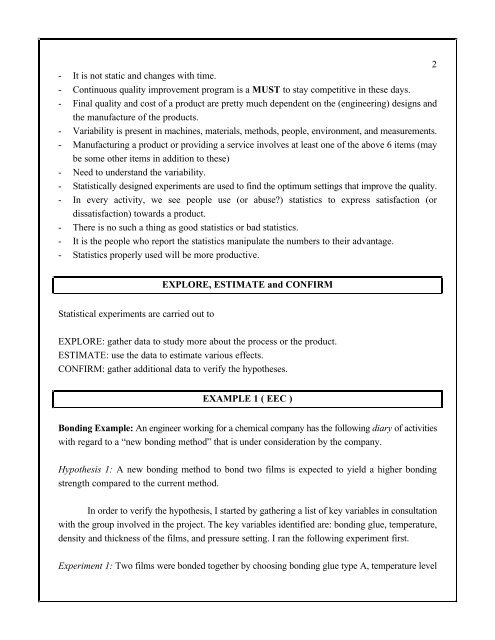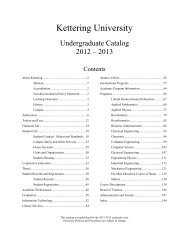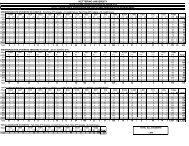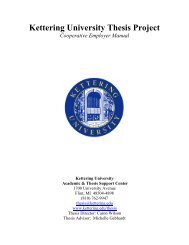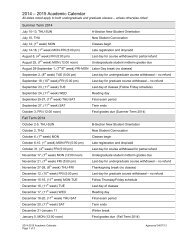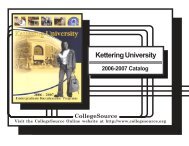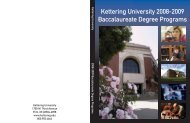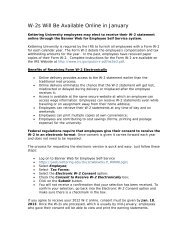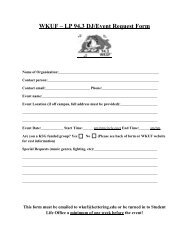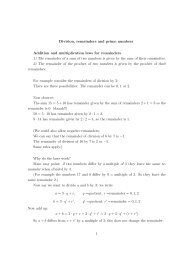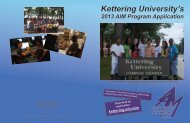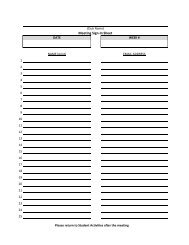1 CLASS LECTURE NOTES - What is Applied Statistics ...
1 CLASS LECTURE NOTES - What is Applied Statistics ...
1 CLASS LECTURE NOTES - What is Applied Statistics ...
You also want an ePaper? Increase the reach of your titles
YUMPU automatically turns print PDFs into web optimized ePapers that Google loves.
2<br />
- It <strong>is</strong> not static and changes with time.<br />
- Continuous quality improvement program <strong>is</strong> a MUST to stay competitive in these days.<br />
- Final quality and cost of a product are pretty much dependent on the (engineering) designs and<br />
the manufacture of the products.<br />
- Variability <strong>is</strong> present in machines, materials, methods, people, environment, and measurements.<br />
- Manufacturing a product or providing a service involves at least one of the above 6 items (may<br />
be some other items in addition to these)<br />
- Need to understand the variability.<br />
- Stat<strong>is</strong>tically designed experiments are used to find the optimum settings that improve the quality.<br />
- In every activity, we see people use (or abuse?) stat<strong>is</strong>tics to express sat<strong>is</strong>faction (or<br />
d<strong>is</strong>sat<strong>is</strong>faction) towards a product.<br />
- There <strong>is</strong> no such a thing as good stat<strong>is</strong>tics or bad stat<strong>is</strong>tics.<br />
- It <strong>is</strong> the people who report the stat<strong>is</strong>tics manipulate the numbers to their advantage.<br />
- Stat<strong>is</strong>tics properly used will be more productive.<br />
EXPLORE, ESTIMATE and CONFIRM<br />
Stat<strong>is</strong>tical experiments are carried out to<br />
EXPLORE: gather data to study more about the process or the product.<br />
ESTIMATE: use the data to estimate various effects.<br />
CONFIRM: gather additional data to verify the hypotheses.<br />
EXAMPLE 1 ( EEC )<br />
Bonding Example: An engineer working for a chemical company has the following diary of activities<br />
with regard to a “new bonding method” that <strong>is</strong> under consideration by the company.<br />
Hypothes<strong>is</strong> 1: A new bonding method to bond two films <strong>is</strong> expected to yield a higher bonding<br />
strength compared to the current method.<br />
In order to verify the hypothes<strong>is</strong>, I started by gathering a l<strong>is</strong>t of key variables in consultation<br />
with the group involved in the project. The key variables identified are: bonding glue, temperature,<br />
density and thickness of the films, and pressure setting. I ran the following experiment first.<br />
Experiment 1: Two films were bonded together by choosing bonding glue type A, temperature level


